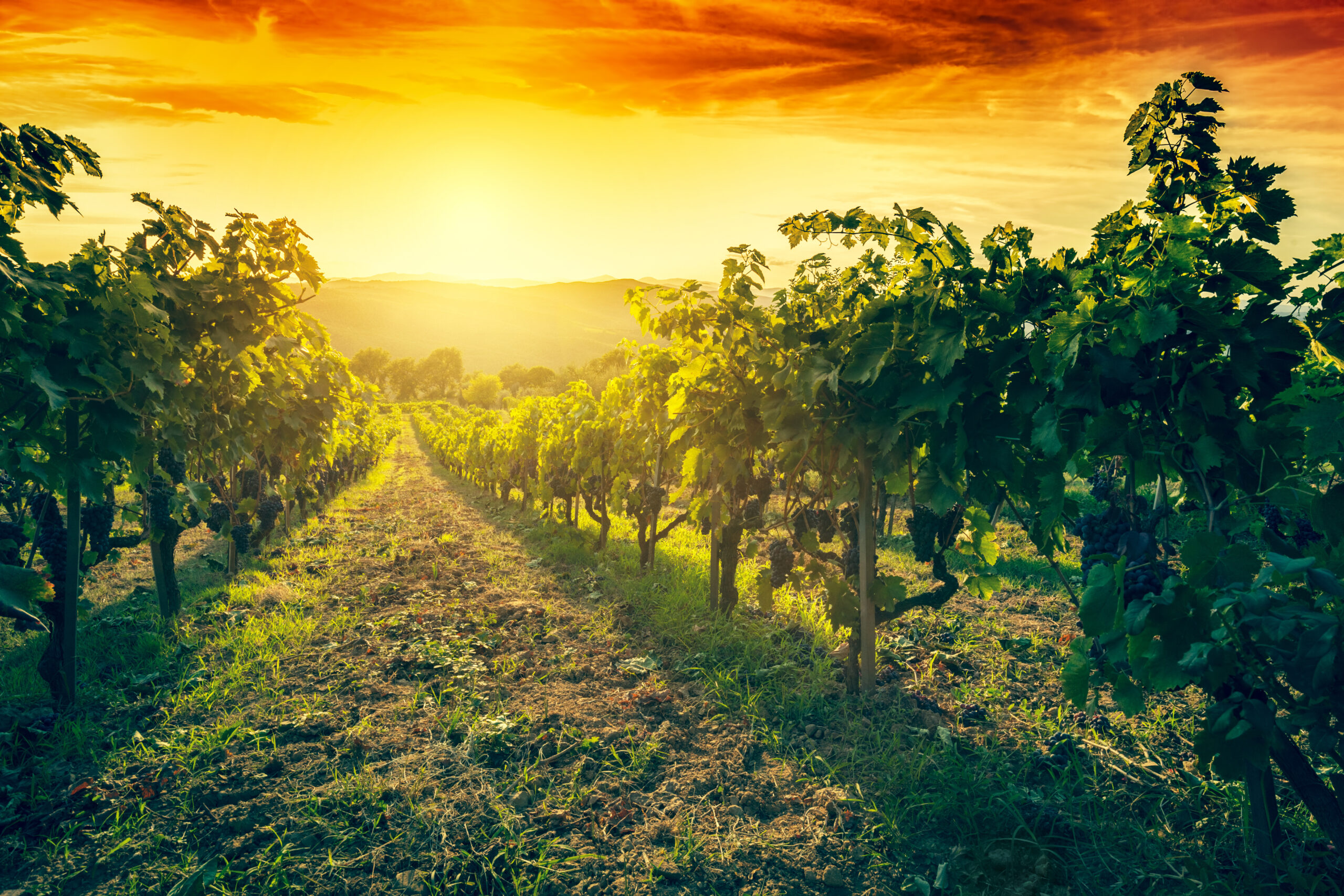Investing in vineyards – a booming asset class
Exactly like a great piece of art, vineyards are the asset of dreams or pleasure, but which need to be very carefully analyzed if the investor targets a performance and not just leisure. Buying a prestigious wine-growing estate and producing your own wine that goes on to prove a certain success in Europe, but also around the world can be one of the greatest adventures of a lifetime for many of us. Beyond the way of life and the passion for wine, an exceptional vintage is now a very highly prized and rare type of asset.
Subscribing to a fund investing in vineyards means combining very often a high quantity of passion with an entrepreneurial venture, as the final product of the investment is a tangible and testable product. In order to best meet the specific characteristics of this market, we at Thales Solutions, have created a specific investment vehicle responding to in vectors’ demand and needs.
Such a passionate and sustainable asset class deserves some explanations, so that investors receive some keys of how their investment choice needs to be guided. A properly structured and man aged vehicle can offer the possibility to seize rare and exclusive opportunities while providing support in the acquisition of European wine-growing assets and companies in the industry. The vehicle ideally must act as a real estate and private equity fund, globally investing in vineyards (real estate) and vineyard related assets (private equity) such as vineyard management companies, wine storage facilities and global wine distributors securing steady returns to investors from the production and global distribution of highly marketable wines.
A team composed of professionals from the wine and investment funds industries are on hand to assist throughout the acquisition process, and in disclosing the business plan required prior to any investment. The vineyards investment holds its premises from events and trends, we have been observing for a certain period of time, Marc Schiettekat from Le Wine Group Belgium said. In the last decade, the wine market has evolved enormously both in terms of production and distribution. Within the Old World, a quality-driven and native Italy rivals more than ever with the historically dominant France.
Spain, Portugal and Austria are also constantly showing their vast potential. These countries are increasingly focusing on their native grape varieties. In fact, these grape varieties are now also being planted more and more widely in the New World wine countries. Climate change also plays a huge role in all this. Native grape varieties
are often more resistant to the local climatology. They have a better natural resistance to climate variations, produce more acidity in the region where they are historically anchored and ultimately deliver more elegant and balanced wines.
Climate change and the reduction of CO2 emissions are a major challenge for the wine world, perhaps even bigger than the once disastrous phylloxera plague in the late 19th century. In wine producing countries, vineyards cover on average less than 10% of the agricultural area, but in some cases represent 25% of pesticide use. The viticulture of the future is one with a vision in which organic farming would only be too simple a summary of the problem. It also makes little sense to measure yourself to a clear conscience by planting a hectare of forest for every new hectare of vineyard you create. This is often just a window dressing, so to speak. Like we can imitate sugar for our own body and metabolism, we can also give signals to the land and nature so that it responds positively to our presence and the crops we plant.
Respecting the land through, among other things, regenerative and diversifying plantations helps our CO2 footprint further and faster than afforestation compensation or the sometimes-insufficient rules and commercial compromises of the organic standards. We do not only focus on the indigenous grape varieties and their natural environment, but we are also so cially committed to get the local population fully involved in the regeneration of their land, in regaining their self-esteem and to help them believe in their own natural potential. Despite the climate change, Spain and Portugal offer unprecedented opportunities. The fact that large parts of ideal situated land still can be cultivated and sometimes even have to be discovered, means that entering the market and making the necessary investments can still be done at very favourable prices.
It’s not just the wine production which is undergoing an enormous transformation, the historical distribution channels are also being put under pressure and are being forced to reinvent themselves continuously or disappear. The disruption of the traditional wine trade is even worse than 30-40 years ago when supermarket chains started offering wine to their clients. Initially, the reactions of the specialist wine trading companies were pitying. However, some of the most established values from father to son ran into problems because of habituation, lack of dynamism and not growing with the changing market standards of customer service. Claiming exclusivities both in terms of product and distribution regions made their world smaller and smaller, up to the point where large-scale distribution has now taken over up to 85% of trade in many countries.
And history is simply a never-ending story
The digital network and the online business would only play an informative role for the wine world. The customer would surely always want to taste. True for a part of the online sales but the major part is sold in three clicks because of the offer being presented super attractive and claims to be a bargain. Even before Covid and the hectic 2020-21 period of lockdowns, or the current war in Ukraine, it was already clear that wine online would not be a business in the periphery. It’s here to stay and we did not see its entire potential yet!
Through the various underlying structures of a fund, we have a solid relationship and connection with all distribution channels worldwide and we are on board with retail, discount, specialist retailers and the larger online players. Along with the shifting of wealth, the consumption of wine will also shift. Most markets in the world are already used to the consumption of beer and other alcohol. Within alcohol consuming markets, appreciating fine wine is a process that often coincides with softening the culture in its prosperity. A few of the largest countries in the world are at that tipping point and, in addition to the already existing Western wine market, will soon become top customers for premium wines.
Example of target investment for a Vineyard Fund
150Ha property, consisting of 80Ha vineyards (mostly old vines) and 70Ha other (olive trees etc.). Buildings comprising a wine cellar storage, a bodega, a medium capacity bottling installation, office space and all necessary agricultural equipment are included. The company is operational and produces 4,500 hectolitres of medium quality wine annually (the equivalent of approximately 600,000 75cl bottles). Real value of the property with worldwide distribution of its wines is estimated at EUR 7,4M including EUR 3,7M real estate value. The lack of a good distribution drops the value of a project very quickly. In this particular case it goes down to EUR 4,7M.
A proper distribution of produced wines is primordial and represents the major problem of many weakly-known wine producers which results in limited interest on the buying side for the property. In the near vicinity there are additional parcels of vineland plots, ranging from 1 to 15Ha, and totalling hundreds of hectares that may be purchased at an average price of EUR 8,000 per Ha. It is extremely important what the location of the property is. Being in an area with historical sufficient rainfall and no major historical agricultural catastrophes, only brings an added value since the beginning of the project.
Based on the history of the property and its books, a business plan is established in a pure financial manner. The maximum price the fund is willing to pay for this property is roughly EUR 3,5M including relevant costs and taxes. The production of 4,500 hectolitres is initially reduced to 3,600 hectolitres through pruning to produce better quality fruit and higher quality wines. 3,600 hectolitres equate to 480,000 75cl bottles. Approximately 20% or 96,000 bottles are to be used for promotions which is a market practice frequently spread. 384,000 bottles are to be sold with a profit of EUR 1.20 per bottle. Short-term estimates bring the profit to EUR 1.50 – EUR 2 after 3 years of exploitation. At EUR 1.20 per bottle (net profit registered), the revenue target is EUR 460,800. The relevant ROI of the presented investment is comprised between 13.55% and 15.36% based on the above purchase price range for the property.
Additionally, the fund can rapidly ac quire 150 Ha of surrounding vineland at an average price of EUR 8,000 totalling EUR 1,2M (inclusive of all costs). The additional extra production totals 6,750 hectolitres or 900,000 75cl bottles. The latter minus 20% or 180,000 of promotion bot tles totalizes 720,000 bottles to put on sale. At EUR 1.20 of net profit per bottle the ROI hits EUR 864,000 or 72% over the purchase price of the extra vineland.
The rationale is that the reward on extra parcels of vineland is much higher than on the initial vineyard where the purchase price includes buildings and material needed for wine production.









